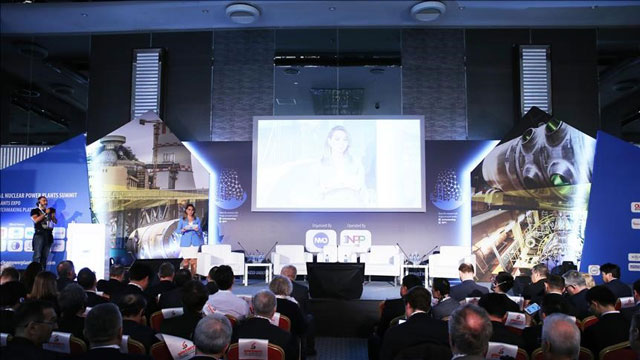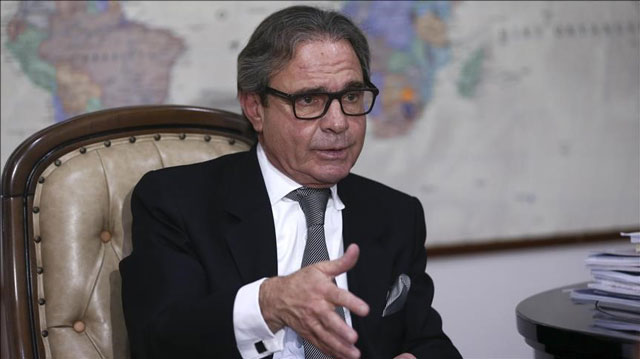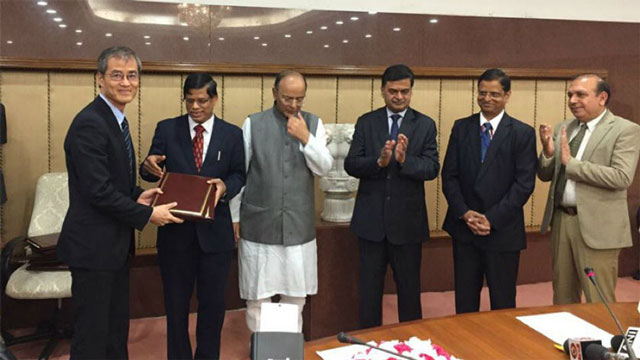First Turkish specialists have earned their degrees in the field of nuclear power engineering in Russia 
A graduation ceremony honoring foreign and Russian nuclear power engineering students was held in the Obninsk Institute for Nuclear Power Engineering (IATE) under the National Research Nuclear University MEPhI. Among 173 graduates were citizens of Russia, Mongolia, Vietnam and Turkey.
35 Turkish specialists have completed a 6.5-year education and training program and successfully defended their graduation projects. All of them will be employed by AKKUYU NUCLEAR to participate in the implementation of the first NPP in Turkey.
The first Turkish nuclear power engineers have been greeted by Mr. Alexey Likhachev (Chief Executive Officer of ROSATOM, Russian State Corporation), top management of Rusatom Energy International JSC (project developer and majority shareholder of AKKUYU NUCLEAR JSC), management of employer company, AKKUYU NUCLEAR JSC, and other Russian guests.
The graduation ceremony in Obninsk was attended by the Ambassador of the Republic of Turkey in the Russian Federation Mr. Hüseyin Lazip Diriöz, Deputy Minister of Energy and Natural Resources of Turkey Mr. Necati Yamaç and other official guests from Turkey.
"Education of nuclear power specialists in the National Research Nuclear University MEPhI has been performed under the Intergovernmental Agreement signed between Russia and Turkey concerning the construction of Akkuyu NPP in Mersin province. This major project is one of the major ones in the development of cooperation between Russia and Turkey", said the Ambassador of the Republic of Turkey Mr. Hüseyin Lazip Diriöz in his congratulation speech.
Mr. Alexey Likhachev, Chief Executive Officer of ROSATOM, a Russian State Corporation, said addressing the new graduates: "Now you have a real opportunity to succeed as professionals, because the education you have received is truly considered as one of the best in the world; and the atomic science and industry is a fast growing area in many countries. I am sure that you will occupy a rightful place in life".
The Deputy Minister of Energy and Natural Resources of Turkey Mr. Necati Yamaç said: "Russian education in the field of nuclear power engineering is sought after. And it is symbolic that first Turkish nuclear specialists have received their training in the town, where the first nuclear power plant in the world was built. Now our newly graduated specialists will take part in the construction of the first NPP in Turkey. The fact that they have earned their degrees is a significant step in the implementation of Akkuyu NPP.
The Chief Executive Officer-Director of the NPP under construction Mr. Yury Galanchuk said in his interview to mass media: "Now for the graduates who, owing to the results of their training, will take responsible positions in the Akkuyu NPP construction project, additional individual training will begin in the format of the on-the-job tutorship. Russian experts of AKKUYU NUCLEAR JSC with a vast experience of work at the Russian-design NPPs will pass over their practical knowledge, experience and competence required for the safe and reliable operation of equipment and process systems of the first Turkish nuclear power plant".
Emre Yarar, a graduate of IATE NRNU MEPhI, praised the high level of education he has received in Russia: "I have learned in minute details everything about the nuclear power plant which will be built in our country, from both theoretical and practical point of view. I am very proud to know that I shall make a contribution to the process of the transfer of new technologies to my country. My mission is to take the most active participation in the construction by Turkey of its own nuclear power plant.
Coşkun Karadaş, a graduate of IATE NRNU MEPhI, said in his turn that Turkey has undertaken, first time in 60 years since the decision to build a NPP, some practical steps, and his participation in this project is a source of special pride for him. "My biggest dream, ever, for a long time, has been to work in the nuclear industry, and, having obtained corresponding knowledge and experience, to do my part in the construction of the first NPP in Turkey built upon the Russian design, and to bring Turkey to the significant level in the global nuclear power industry", said Karadaş.
Mr. Konstantin Ryzhak, Managing Director of AKKUYU NUCLEAR JSC, stressed the following: "According to the ‘Akkuyu NPP personnel selection, training and development program’, all Turkish students – young nuclear power engineers will be employed by AKKUYU NUCLEAR JSC. Of course, their academic progress will be considered when placing them in vacant positions. Today’s success of the graduates would be impossible without support their families lent them. We are thanking them for that!”
At the moment, 221 Turkish students are still receiving education as part of the program of education and training which started in 2011; of this number, 196 have been studying in NRNU MEPhI and 25 in Saint-Petersburg Polytechnic University. Total duration of education course under this Program is 6.5 years: during the first year, the students learned Russian; then during five and a half years they took the course in the design, operation and engineering of nuclear power plants.
Source: Akkunpp







